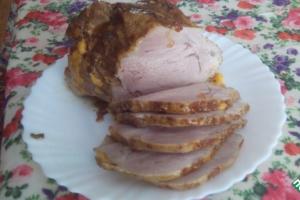The presence of a hood and its properties may determine whether the kitchen will be a cozy “corner” where family members like to gather and where it is not shameful to invite guests, or whether it will turn into a “hot workshop” with the inevitable smells of smoke, burning and who knows what else. If the desire for comfort is more urgent, the first thing you need to do is calculate the optimal performance future exhaust device. For this there is a generally accepted formula: the volume of the kitchen (L x W x H) must be multiplied by a factor of 10-12. As a result, we obtain a value showing how much air should be renewed (purified) in the room per unit of time (1 hour). If you choose a hood with parameters below the calculated ones, it can become just a decoration with a lighting function. But even for a small kitchen, a model with a capacity of 1000 m³/h or more will be overkill. What else needs to be taken into account to choose the best hood with optimal characteristics, we will consider further.
Criteria for choosing a good hood
Power
You already know how to calculate productivity. But the resulting figure will not be entirely correct. It is important to understand that a coefficient of 10-12 will give a result in which the hood with the appropriate parameters should work at its maximum. And, therefore, at peak volume levels and with full load on the motor. The type also matters hob. For electrical panels and slabs, it is better to carry out calculations with an increase in coefficient to 15, and for gas slabs to 20. The length of the ventilation route, the presence of bends, as well as the diameter of the pipe or the cross-section of the duct, additionally affect the efficiency of air exchange.
Operating mode
Most hoods are connected to the kitchen ventilation system. IN withdrawal mode they remove air along with odors and fumes outside the room. Many popular models also support circulation mode- when the air is purified using filters and returned back to the room. Filters need to be changed regularly (every 4-6 months). This mode is convenient in winter - for maintaining heat in the room.
There are models of hoods designed to operate only in circulation mode. Such " hoods without ventilation"There are very interesting designs and unusual design- there are models that are built into a table, wall-mounted hoods, hanging hoods, etc. But the cost of hoods without ventilation is quite high - mostly from $1000 and more. So they didn't become popular.
Dimensions
For efficient work The width of the hood must be no less than the width of the stove. Most often, hoods are produced in widths of 50, 60 and 90 cm.
Noise level
Too noisy hoods can turn being in the kitchen into a nightmare, so when choosing a hood, pay attention Special attention to the maximum. It is advisable that it does not exceed 60 dB.
Lighting
Many manufacturers equip their hoods with brightness adjustment for maximum comfort of use, but some models do not have this function.
Which hood manufacturer is better?
Traditionally, the palm is held by time-tested German and Swedish brands: Siemens, Bosch, Asko. If the Scandinavian manufacturer is represented strictly in the premium segment, then the German Bosch and Siemens, in addition to the flagship models Serie 8 and IQ 700, offer consumers high-quality hoods in the middle price range. Positive customer reviews ensured presence in the rating the best hoods popular brands Hansa, Shindo, Kronasteel. Pleasantly pleased with success Russian brand kitchen hoods ELIKOR, which does not try to pass itself off as a mythical company from the European Union, but positions itself and develops precisely as a domestic manufacturer.
ABOUT best models hoods for the kitchen - more details in our rating.
When choosing a hood for the kitchen, you should take into account not only its compliance with the design of the room and the brand under which it is manufactured. One of the most important selection parameters is the performance of a kitchen hood - the volume of air that the hood can clean per unit of time.
How to determine the required performance, and how to choose the right hood for your kitchen - we will talk about all this in this article.
Various types of hoods
Flow hoods
When choosing a hood, you need to familiarize yourself with the entire available range - after all, there are exhaust devices on the modern market different types. The most common designs include two types of hoods: flow and circulation. Their work in cleaning the air in the kitchen is based on different principles - and therefore each of the varieties of these devices should be considered separately.
Flow type hoods work according to the following principle:
- Contaminated hot air, under the influence of the electric motor blades, rises through the air duct and is removed into the ventilation ducts of the building.
- During the removal process, the air passes through a special metal filter. Particles of soot, soot, and also droplets of fat suspended in the air settle on this filter.
Note! The anti-grease filter should be periodically cleaned of dirt, otherwise it will resist the air flow too much. At the same time, even the most powerful kitchen hood will not cope with the removal of dirty air.
- Since the air passing through the air ducts no longer enters the room, additional filters (for example, anti-odor filters) are almost never installed in such hoods.
- The efficiency of this type of hood depends not only on its rated power provided by the internal motor, but also on the condition of the building's air ducts. In homes with clogged ventilation ducts, a significant portion of the hood's power will be lost.

Circulating hoods
Selecting a hood by size and power
Hood dimensions

An important parameter for choosing a hood, which directly affects the efficiency of its cleaning work kitchen air, is the size:
- As a rule, hoods whose area is equal to or exceeds that of hob or gas stove (as shown in the photo). In this case, sufficiently powerful kitchen hoods are able to completely capture the vapors rising above the stove - and either remove them into the air duct or effectively clean them through filtration.
- Standard size of hoods industrial production corresponds to the most common dimensions of hobs. Most models on the market have a width of 50 or 60 cm (such trade marks like ELICA, FALMEC, SMEG, etc.).

- More powerful, but at the same time more expensive hoods have a width of 80 cm to 1 m. Their performance is sufficient to completely clean the air over a large hob - that’s why such large models are sometimes considered semi-professional.
- As for do-it-yourself hoods, their performance depends both on the installed motor and on the configuration of the dome and hood duct. That's why, when starting self-production exhaust device, it is better to include in the project some margin in terms of dimensions, and therefore power!
Hood power
However, the key factor on which the operation of the hood depends is, of course, its power. The more powerful the hood, the faster it cleans the air in the kitchen, which means the more comfortable you will be in this room.
The power of hoods is measured in cubic meters of air per hour.

The minimum productivity of industrial hoods is about 200-300 cubic meters per hour. Such models are quite inexpensive, but they do a very poor job of cleaning the air. It is for this reason that the installation of such low-power hoods can only be recommended if you cook very rarely - otherwise there will be an unpleasant smell and headache from carbon monoxide will become your constant companions.
If you cook often, then a standard (about 600 cubic meters per hour) or enhanced hood is suitable for you. High-power devices are capable of passing up to 1000 cubic meters of air per hour, but the price of such devices is quite high.
Hood power calculation
If you are in doubt which hood model to choose, we recommend that you calculate the minimum required power this device for your kitchen. Power is calculated using the formula:
Q = 12 x S x H, where:
- 12 is the sanitary standard for air exchange within an hour (i.e., for a comfortable stay in the room, the air must be replaced at least 12 times).
- S is the area of your kitchen.
- H – kitchen height.

The resulting value will be the minimum exhaust power. If the model you choose has less power, you shouldn’t purchase it. And if more, then there is a performance margin exhaust device won't hurt. However, there is one nuance, which we will discuss in the next section.
Hood and noise level
Powerful kitchen hoods have one very significant drawback - they make quite a lot of noise when operating. It is unlikely that you will be able to assess the noise when demonstrated in a store, so the instructions will come to your aid.
It usually indicates the volume at which the fan operates:
- If the volume is 30-45 decibels, then you can install a hood in the kitchen.
- If the sound level exceeds 55 decibels, then such a hood can only be installed in a very spacious room. Otherwise, unpleasant sensations are guaranteed!
We hope that the recommendations outlined in this article, which describe how to determine the power of a kitchen hood and what factors to pay attention to, will help you make the right choice. After all, a high-quality hood is one of the indispensable conditions for your good health. At least - while you're cooking in the kitchen!
It’s hard to imagine a modern kitchen without a hood. This household appliance has become a must-have attribute in any apartment or private house. Its main purpose is to remove water vapor and odors from food being cooked on the stove from the room. In this article you will learn how to choose the right kitchen hood and not get confused among the numerous offers from manufacturers.
The kitchen is a special room in every home. All family members gather here, and each person spends about half of his time at home. That is why it is very important that the air and atmosphere in the kitchen are as clean and favorable as possible. The problem of air purification is in the first place, because food aromas constantly hover in the room and combustion products are produced. It is very uncomfortable to be in an insufficiently ventilated room under such conditions.
Some believe that to ventilate the kitchen it is enough to open the window, others place all responsibility on the natural exhaust ventilation, which is in every apartment multi-storey building. However, in reality everything is a little more complicated. Please note that the hood is placed directly above the hob or stove so that combustion products and water vapor enter the appliance as quickly as possible and are removed from the room. If ventilation is carried out only through a window and a grille under the ceiling, vapors with microscopic particles of food, oils and fats will inevitably settle on the walls near the stove and the ceiling above it. Only a small part of them will be eliminated through the ventilation holes, and literally in a year in such a kitchen you will be able to observe darkening of the interior finish or obvious grease stains on the ceiling.
Now it becomes obvious that the hood not only helps to keep the air in the kitchen clean, but also significantly extends the life of the interior decoration. All hoods operate on the principle of forced ventilation, drawing air inside and passing it through a filter system. But what will then happen to this air depends on the design features of the device. There are recirculating and flow-through hoods. The first, as the name suggests, passes air through filters, cleans it and releases it back into the kitchen. The latter only remove water vapor and combustion products through the external ventilation system. They are easily recognized by the pipe leading from the device into the wall or ceiling. Flow hoods are considered more efficient than recirculating hoods and remove waste air from the room faster.

To know how to choose a kitchen hood, you need to study the design features at least in general terms:

Functional Features
A properly selected modern hood can remove up to 97% of polluted air from the kitchen, but the emphasis here should be on the word “correctly.” Most people do not know which kitchen hood to choose and are guided only by the price factor or the number of positive reviews on the seller’s website. However, the issue should be approached from a completely different angle, and first of all, determine the required performance of the device. Performance is affected by power, which in turn affects the noise level of the device. Also plays a significant role appearance, dimensions, body material, etc. There are quite a lot of factors that should be taken into account, but you need to understand them so as not to buy an expensive, beautiful and completely useless “toy”.

When choosing, pay attention to the air pressure generated by the motor. If they are high, then the hood has good performance. Pressure is pumped up by fans, therefore, a powerful hood must have powerful fans: 1 or 2 pcs. They can operate at 2 or 4 speeds respectively. The power of the hood is the strength of its fans, and the performance of the device depends on this. Productivity is the ability of a hood to remove a certain amount of air in a set time. For modern hoods, this parameter ranges from 180 to 700 m³/h. However, there is one pitfall here - a powerful hood with high performance It will make a lot of noise. Fortunately for home use It is rarely necessary to turn the device on to maximum, and if it is sometimes necessary to properly remove fumes or smoke, if the food is burnt, you can wait a few minutes.

To determine how powerful the hood should be specifically for your kitchen, you need to make simple calculations. Find the volume of the room and the volume of furniture in it. Subtract the second from the first indicator and multiply the “net” volume by 10. This number will determine the required hood performance. At the same time, established sanitary standards should also be taken into account, requiring a complete change of air in the kitchen 10-12 times per hour.
There is another way to calculate productivity that you may find easier. So, first find the area of the kitchen, multiply it by the height, and then multiply this number by 12 (air exchange rate according to sanitary standards). Multiply the result by 1.3 (safety factor) and get productivity. For example, you need to choose a hood for a kitchen with an area of 6 m² and a height of 2.5 m: ((6*2.5)*12)*1.3=234 m³/h.
How to choose a kitchen hood
So, the most important parameter - the performance of the hood - has already been determined, but this is not all that needs to be taken into account when choosing.
Basic selection options:
- Size – In theory, the larger the hood, the better, but a bulky device is unlikely to decorate the interior, and ergonomic devices are very expensive. Here you need to start from the size of the slab - the width of the hood should be the same or slightly larger than the width of the slab. Otherwise, it will allow some of the fumes and combustion products to pass through, which will slowly but surely spoil the suspended kitchen furniture And interior decoration. For example, if the slab is 60 cm wide, it needs a hood with a width of at least 70 cm, and better yet 90 cm, if there is free space.

- Control – each hood has a control panel on the outside of the body: touch, push-button or slider. In terms of use and maintenance, the touch panel is much more convenient than the slider panel, where the operating mode of the hood is selected by a mechanical slider. With buttons it’s still easier, but, as practice shows, over time they get clogged small particles dirt and products, which impairs the appearance and operation of the device. Simply wipe the touch panel with a cloth.

- Operating modes - you already know that hoods can be recirculating or flow-through. If you decide to buy a recirculation model, we recommend that you immediately purchase a supply of replacement filters for it and choose a model for which filters are easy to find on sale.
- Filters – filters trap microscopic particles in the exhaust air. Thus, there are fine and coarse filters. All of them are metal meshes with different cross-sections - the efficiency of odor capture depends on the cross-sectional dimensions. Metal filters are reusable and should be washed when they become dirty. An additional filter in the form of a disposable mesh made of synthetic fibers can also be installed in the hood. Such meshes are not intended for washing and must be replaced with new ones. The frequency of replacement depends on the intensity of use of the hood in circulation mode. By the way, almost all models can be converted to recirculation mode. Some budget devices operate without metal grease filters at all, removing exhaust air through the ventilation duct, but the efficiency and durability of such devices are quite low.

- Functionality – In addition to the ability to remove fat and unpleasant odors from the air, extracts can have additional functions. For example, the residual fan stroke helps save energy consumed by the hood - the device continues to purify the air for another 5-15 minutes after switching off, operating at the lowest power. Many hoods are equipped with an electronic timer that turns off the appliance after cooking is complete. Also, almost all appliances have built-in lighting, and since hoods are installed above the stove, additional light helps when cooking. It is more economical and convenient to choose hoods with halogen rather than conventional incandescent lamps.

- Noise level – we mentioned earlier that what more powerful fans in a hood, the higher its performance, but the louder it makes noise. The noise level is measured in decibels, and a hood can be called “very quiet” if it produces a noise of no more than 45 decibels. For isolated kitchens that are not combined with other rooms, hoods up to 50 decibels are suitable. But if this indicator rises to 70, the switched on hood will be very disturbing - the noise from it can be compared to a situation when someone is talking loudly 5 meters away from you.
- Body material - not only the technical component of the model is important, but also external data, of course, if you do not need to choose a built-in kitchen hood, which you will then simply disguise as a cabinet. The housing can be made of aluminum, stainless or enameled steel, plastic, tempered glass. Processed aluminum has proven itself best - its cost is fully consistent good quality. The surface of such hoods is matte, which fits perfectly into any interior. The main advantage of this material is that fingerprints are not visible on it, which cannot be said about glossy surfaces or glass. Glass hoods certainly look very stylish and modern, but to maintain this appearance they require constant maintenance.

Cost of hoods
There are a huge number of models on the market from a variety of manufacturers, and accordingly, the price range is very wide. First of all, it is worth immediately noting that in this case it would be a mistake to follow the rule that the higher the cost, the better the quality of the product. For example, inexpensive kitchen hoods Hephaestus have proven themselves to be durable and comfortable. We remind you once again that it is more important to choose the right model with the required technical characteristics, and its cost will play a secondary role. You should also take into account the fact that the price of the device is greatly influenced by its appearance - stylish designer models cost an order of magnitude higher.

Differences between hood models of different price categories:
- The cheapest hoods are those with a plastic body and a small amount of metal parts. Their control panel is usually push-button or slider; there are no more than 3 operating modes (fan speeds). The productivity of such devices, as a rule, is no more than 450 m³/h. Additional lighting is usually represented by one or two incandescent lamps.
- The middle category is models with a body made of of stainless steel, tempered glass or aluminum. Here you can already find devices with simple touch panels and even displays. Lighting can be provided by halogen lamps or incandescent lamps. The productivity of such devices is slightly higher compared to the previous line - up to 650 m³/h.
- Expensive hoods have the highest productivity up to 1300 m³/h. The body of such models is made of tempered glass; natural wood can be used for finishing. The functionality is very diverse - temperature sensors, smoke sensors, humidity sensors, filter contamination, remote control etc. Lighting only with halogen lamps.
Review of manufacturers
Finally, we invite you to familiarize yourself with a small list of the most famous manufacturers of kitchen and household appliances, which offer hoods in various price categories. At the beginning of their searches, many people immediately pay attention to the products of the “promoted” German and Swiss brands Bosch, Siemens, Electrolux and Kuppersberg. The cost of such devices is quite high, but the quality and external data are fully justified by such a price.
We will look at these and other brands that have proven themselves to be the best:

A range hood is undoubtedly a necessary kitchen appliance. It helps not only to enjoy constantly clean and fresh air, but also protects furniture and interior decoration from premature wear. Choose the hood correctly, and then even an inexpensive model will create a perfect comfortable conditions in the kitchen.
In order to comfortably prepare dishes in the kitchen and then eat food, you should take care of high-quality ventilation of the room. Our apartments have common ventilation ducts, which partly save the situation, but, as a rule, are not effective enough. And then you can “invite” a hood to help - a special device that will forcibly remove polluted air from the room.

How to check that you need a hood
You can do one of the following:
- Bring to ventilation hole burning match, look at the flame. If it deviates to the side ventilation duct, this means that draft is present, although it is impossible to accurately judge its level from the flame.
- Attach a regular sheet of A4 paper to the hole. If it sticks, it means that air is being drawn out of the room quite effectively. Otherwise, the need for exhaust hood is very high.

Device selection
What criteria can you use to select:
- external data;
- dimensions;
- form;
- principle of operation;
- performance.
Perhaps the most valuable is the last parameter. After all, it determines the effectiveness of removing contaminated air from the kitchen. And here the question arises, how to determine the required productivity so that the process is as productive as possible, and the stay in the room is as comfortable as possible.

About performance
To find out what device performance is required, you should determine the minimum power that the device must have.
Performance is calculated without contact with the air outlet. This parameter can be found in the instructions for the device, where it is designated by the FB parameter, which means Free Blow.

In general, performance is calculated with an adjustment for the installation of an air vent of a specific cross-section and length. The result is data that is closest to real indicators. This option is defined by the IEC 61591 standard. With this method of determining performance, the indicator is slightly lower than with FB. It should be noted that manufacturers generally indicate both indicators in the instructions.

In some cases, performance data in recirculation mode is also provided. These data are even lower. After all, productivity decreases due to air passing through filters and overcoming obstacles.
Productivity is determined in cubic meters per hour.
Ventilation duct cross-section
In most cases, to calculate power (performance), it is proposed to calculate the volume of the room and multiply it by the required coefficient. As we've discovered, this figure may be somewhat inaccurate. Reviews confirm this.

Therefore, let’s try to calculate the power, taking into account the cross-section of the ventilation ducts. In most of our apartments, a channel diameter of 140 mm or a square section of 130x130 mm is used. Up to 400 m 3 /h of air can pass through such an air vent. Of course, this is an ideal indicator. But there are also channel irregularities, bends and other obstacles that impair cross-country ability.
If the hood operates in circulation mode, the calculation can be made based on the volume of the room. The formula for calculations may look like this:
where P is the required performance of the exhaust device, m 3 / h; K1 – constant coefficient, which determines the desired number of air change cycles per unit of time - per hour, is most often taken equal to 12; K2 – safety factor, taking into account the number of floors of the building, resistance of the ventilation duct, pollution, etc., is taken equal to 1.3; S – kitchen area; H – ceiling height.
Now let's consider different variants calculations, taking into account the difference in kitchen area: 6, 9, 10, 11, 12 square meters. m. - our most common options. By default, the ceiling height is 2.7 meters.
- 6 sq.m. – in this case, the following calculation is performed: 12x1.3x6x2.7 = 252.72 m 3 /h;
- 9 sq. m. - the formula will look like this: 12x1.3x9x2.7 = 379.08 m 3 / h;
- 10 sq. m. – productivity will be: 12x1.3x10x2.7 = 421.20 m 3 /h;
- 11 sq. m. - the calculation will be as follows: 12x1.3x11x2.7 = 463.32 m 3 / h;
- 12 sq. m. – let’s calculate the largest indicator: 12x1.3x12x2.7 = 505.44 m 3 /h.
As we see, the most economical option obtained in the smallest kitchen - 6 sq. m. But one can hardly envy this fact if one imagines how sophisticated the residents have to be when using such a tiny room as a kitchen.
Other options
Of course, the power (performance) calculations given are approximate. Ideally calculating an indicator such as productivity is a rather complex undertaking that requires engineering knowledge and practice. Therefore, we focus on the given recommendations, reviews and formulas. This will be enough to choose a good and effective hood. The main thing to remember is that the resulting figure is the recommended minimum amount of possible power for the given conditions.

If the square footage or height of the kitchen ceilings differs from the examples given, you must insert your data into the formula. And then the result will be relevant.
Mandatory calculation of a kitchen hood - important condition for its functionality and comfortable indoor microclimate. However, it will be difficult to perform calculations even approximately without knowing some details.
Like other options for ventilation equipment, the purpose of kitchen exhaust hoods is to remove steam and smoke, microparticles of fat and soot, and other harmful elements from the room. Standard ventilation is not enough for this. And housewives have to spend a lot of effort to clean the stove and tiles adjacent to the cooking area.
To facilitate cleaning and maintain a favorable microclimate, the hood should be several centimeters larger than the hob. In addition, the indoor air must be renewed 12 times within an hour. It is also necessary to maintain a distance between the stove and the hood.
A secondary, from a technical point of view, but important aesthetic point is the compliance of the design of the selected sample general design kitchens. Today you can choose:
- Flat models with and without slope. The most compact option for small kitchens.
- Domed, shaped like a pyramid or hemisphere. The most powerful and suitable for large rooms.
- Built into furniture, niche or wall.
To this list you can add T-shaped, telescopic, island and corner variations.
Based on the principle of operation, manufacturers produce exhaust-type ventilation and those operating according to a recirculation scheme. The former require a constant flow of air. They are cheaper, but less effective at purifying the air. The latter are independent of the external atmosphere, effectively remove contaminants, but require regular updating of carbon filters, which increases the cost of their maintenance.
Power calculation formula
Calculation of the performance of a conventional hood is carried out taking into account the diameter of the exhaust opening. Ventilation ducts in apartment buildings have a maximum cross-section of up to 125 mm. Their throughput per hour is about 400 cubic meters air. With such limitations, equipment with greater capabilities may be rendered useless. For recirculating models, area is more important.
P = (a×b) × h × 12 × 1.3
In this expression:
- P - productivity;
- a * b - area of the room;
- h - height from floor to ceiling;
- 12 - air change rate per hour;
- 1.3 - error coefficient, taking into account additional factors (number of storeys, length and degree of contamination of the mine, number of bends in the channel).
Using the formula, you can calculate the indicator for optimal conditions operation, when the electric stove is running, all windows and doors are closed, and the layout is strictly rectangular.
With standard room dimensions, when the area and height of the ceiling are known, and the conditions for using the equipment are the same, the performance level can be found in the table with ready-made data:
It is better to add another 15-20% reserve to the results obtained for a possible increase in the load on the device.
Consideration of additional factors
To choose a hood for the kitchen, in addition to performance and power, you need to take into account the number of family members, frequency of cooking, layout, type of hob and other factors.
Family size
The throughput of the installation ranges from 200 to 600 m³/h. For two people, a device with minimal parameters will be enough. A family of 3-4 people needs to take a model with an indicator of up to 400 m³/h. For large families, it is better to choose the maximum indicators.
There are also models with enhanced parameters up to 1000 m³/h, but their price is very high.
Cooking frequency
Daily cooking volumes are calculated in a similar way. A monotonous diet and infrequent visits to the kitchen do not require particularly powerful installations. An increase to average levels will be needed with a more varied menu and periodic cooking. And for those who love to cook and spend a lot of time at the stove, it is better to choose a model with increased parameters.
The longer the food is cooked, the faster the air exchange should occur. To speed up this process as much as possible, you need equipment with limit values from 600 to 1000 m³/h.
Layout features
The degree of insulation and layout is another important factor. It’s one thing when the kitchen is separated from the rest of the rooms by a door and has a geometrically correct layout. The situation is different with an open plan, where there are an abundance of irregular lines. The last option is more expensive in terms of power. In this case, when calculating, you need to take into account the dimensions of the adjacent room.
Installing an electric stove can be successfully combined with the choice of a low-power hood. If installed gas stove, increase the specified air exchange coefficient to 20. This will allow for the accumulation of combustion gas waste in the air.
Air pollution level
Choice technical parameters must take into account the possibility of food burning and smoke. Excessively large power reserves of flow equipment will lead to increased noise. The norm is considered to be a noise level of 30 to 45 dB; at maximum modes, it is permissible to increase it to 55. Anything higher causes discomfort.
Performance considerations
Calculation of power level for exhaust and recirculation models will be different. Design features affect the installation of equipment, operating rules, and therefore the requirements for technical parameters.
Diversion or flow devices
This type is equipped with an air duct with a built-in fan. The connection is made directly to the ventilation hole, through which pollution is removed outside the house or apartment. When choosing a model based on technical characteristics, you need to consider:
- total length exhaust duct, for each meter of which the loss of throughput is about 10%;
- the number of bends, each of them consumes the same percentage of power;
- bending angle - with one right angle of 90°, the loss will be greater than with two angles of 45°.
Before installation, check the condition of the ventilation shaft to which you plan to connect. If it is clogged, you will have to spend time cleaning it. Otherwise, even compliance with the productivity standards will not give the expected result. IN apartment building this can lead to the flow of polluted air into the neighboring apartment.
Also, the installation of exhaust equipment, if all requirements are met, often violates natural ventilation and provokes the same consequences. Therefore, in high-rise buildings, it is recommended to connect flow models to a separate output with the appropriate calculations. Ideally, to an air duct with a circular cross-section, a grated air intake at the outlet and a check valve.
Recirculation models
Units with this operating principle are not connected to ventilation and operate autonomously. The cleaning system involves two levels of filtration. At the first rough stage, large particles of fat and burning are removed from the atmosphere. The second stage involves fine cleaning of odors. After this, the air returns to the room. Filter resistance decreases specifications by 30-40%.
But experts say that modern filter elements are thin enough to allow flow to pass through freely. The specified throughput is maintained until replacement. It is not the filter itself that becomes clogged with grease, but the outer grille, which needs to be washed periodically.










